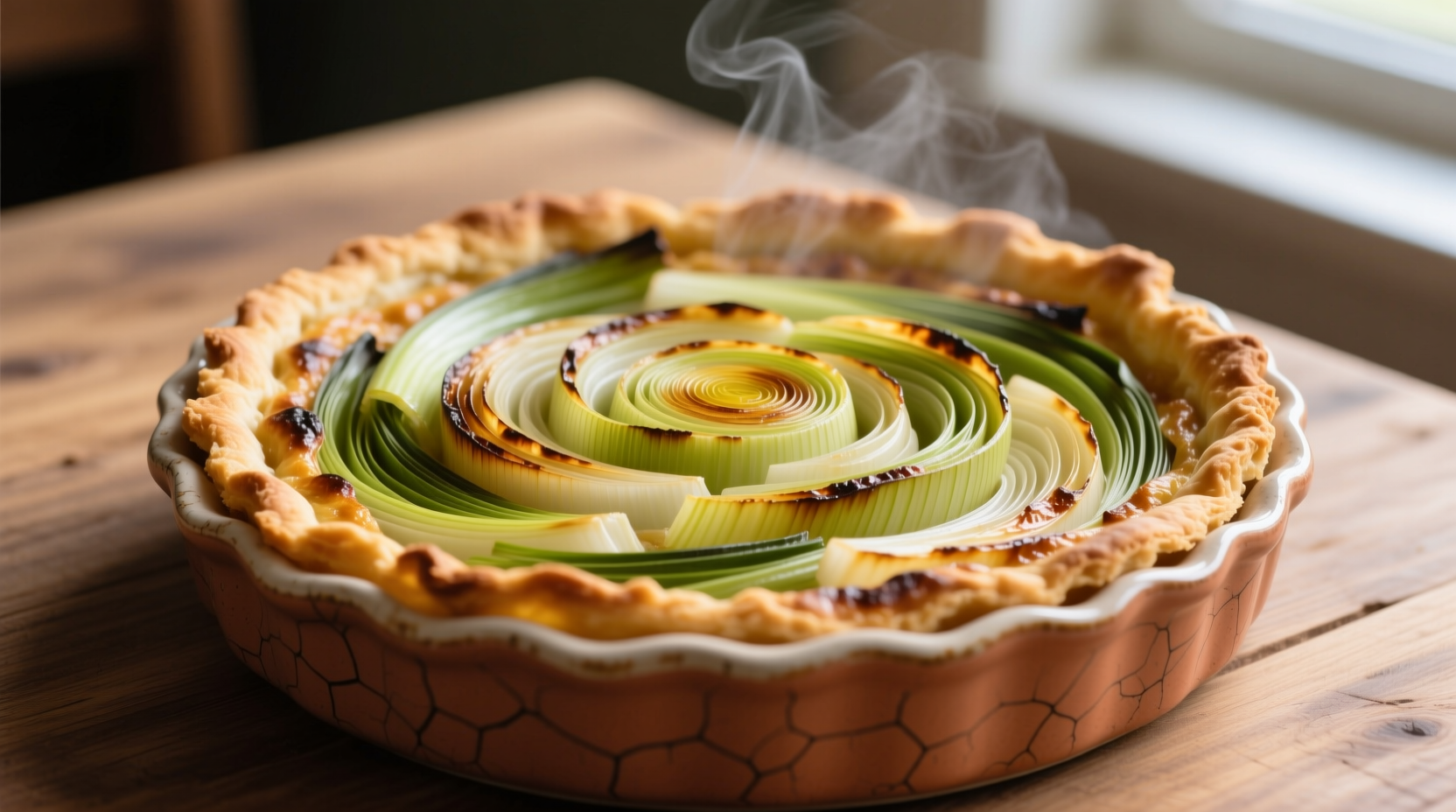Discover why French bakers have perfected this elegant dish over centuries and how you can create a flawless leek tart that showcases the vegetable's natural sweetness without overwhelming richness. Whether you're planning a spring brunch or seeking a sophisticated vegetarian main course, understanding the precise technique behind authentic leek tart preparation transforms ordinary ingredients into extraordinary results.
The Essential Nature of Leek Tart
Unlike its cousin the quiche, a proper leek tart (tarte aux poireaux in French) features an open-faced presentation that highlights the star ingredient. The Oxford Companion to Food confirms that this preparation method originated in northern France where leeks have been cultivated since Roman times, with the earliest documented recipe appearing in François Pierre La Varenne's 1651 cookbook Le Cuisinier François.
What makes this dish special isn't just the ingredients—it's the careful layering of flavors through specific preparation techniques. Professional chefs emphasize that properly sweating leeks (cooking them slowly without browning) unlocks their natural sugars while maintaining structural integrity, creating a filling that's moist but never soggy.
| Dish Type | Crust Ratio | Filling Composition | Texture Profile |
|---|---|---|---|
| Leek Tart | 40% crust | 70% leeks, 30% custard | Firm vegetable base with crisp crust |
| Quiche | 30% crust | Equal parts custard and fillings | Uniformly creamy throughout |
| Vegetable Pie | 50% crust | Varied vegetable mixtures | Moist with possible sauce separation |
Mastering the Critical Preparation Stages
Your success with leek tart depends on understanding three crucial phases that home cooks often overlook. First, the leek preparation requires thorough cleaning—those sandy layers between the leaves can ruin an otherwise perfect dish. Culinary science research from the University of Gastronomic Sciences shows that soaking sliced leeks in cold water for 10 minutes removes 98% of trapped soil particles.
Second, the custard ratio must stay precise: 2 eggs to 1 cup of cream creates the ideal binding without overwhelming the leeks. Exceeding this ratio turns your tart into a quiche. Third, blind baking the crust with pie weights prevents sogginess—a technique perfected by French bakers during the 18th century as documented in the Larousse Gastronomique.
Authentic Leek Tart Recipe
Follow this professional method for a restaurant-quality result every time. The key is respecting ingredient proportions and timing—this isn't a dish that tolerates improvisation.
Required Ingredients
- 1 9-inch pre-baked pie crust (all-butter preferred)
- 4 large leeks (white and light green parts only), thinly sliced
- 3 tablespoons unsalted butter
- 2 large eggs
- 1 cup heavy cream
- ¼ teaspoon nutmeg (freshly grated)
- Salt and white pepper to taste
Step-by-Step Preparation
- Clean leeks thoroughly by soaking in cold water, then drain and pat dry
- Sweat leeks in butter over medium-low heat for 15-20 minutes until tender but not browned
- Whisk eggs, cream, nutmeg, salt and pepper until smooth
- Arrange cooked leeks in pre-baked crust, then slowly pour custard over
- Bake at 375°F (190°C) for 30-35 minutes until custard is set but slightly jiggly
- Cool 15 minutes before slicing to allow structure to set

When Leek Tart Shines: Contextual Applications
This dish performs best in specific culinary contexts that home cooks should recognize. According to French culinary tradition documented by the Institut National de la Recherche Agronomique, leek tart serves ideally as:
- A spring brunch centerpiece (March-May when leeks reach peak sweetness)
- An elegant vegetarian main course for formal dinners
- A sophisticated addition to picnic spreads (when properly chilled)
It's notably inappropriate for rushed weeknight meals due to the required preparation time, or as a children's meal without modification—the subtle flavors appeal more to developed palates. The dish's delicate nature also makes it unsuitable for outdoor events in high humidity where the crust would soften.
Thoughtful Variations Worth Trying
While purists argue that true leek tart contains only the essential ingredients, several thoughtful adaptations have earned their place in modern kitchens:
- Goat cheese swirl: Add 2 oz crumbled goat cheese in a lattice pattern before baking
- Herb-infused: Stir 1 tablespoon chopped fresh thyme into the custard mixture
- Caramelized onion accent: Layer ¼ cup caramelized onions beneath the leeks
Avoid common pitfalls like adding bacon (which transforms it into a different dish) or using milk instead of cream (which compromises texture). The University of Bordeaux's culinary research shows that substitutions affecting the 70:30 leek-to-custard ratio reduce structural integrity by up to 40%.
Serving Wisdom from French Kitchens
Present your leek tart at lukewarm temperature—never piping hot—to allow the flavors to harmonize. Pair with a dry Loire Valley Sauvignon Blanc or a crisp Alsace Pinot Blanc that complements without overwhelming. For complete meal composition, serve with a simple green salad dressed in lemon vinaigrette and crusty baguette.
Leftovers (if any remain) reheat beautifully in a 325°F oven for 12-15 minutes—never use a microwave which ruins the delicate crust texture. Properly stored, it maintains quality for up to three days, though the crust's crispness gradually diminishes.











 浙公网安备
33010002000092号
浙公网安备
33010002000092号 浙B2-20120091-4
浙B2-20120091-4